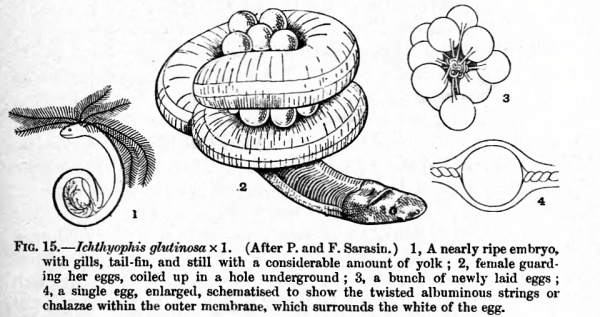Facts About Ceylon Caecilian
The Ceylon caecilian, scientifically known as Ichthyophis glutinosus, is a fascinating amphibian native to Sri Lanka. Often referred to as the common yellow-banded caecilian, this creature thrives in moist tropical and subtropical forests, as well as pastures.
Ranging in length from 23 to 40 centimeters, the Ceylon caecilian closely resembles a large earthworm due to its segmented skin. It has a rounded snout and unique extensible tentacles near its mouth. Its body features a striking steel-blue coloration on top, with a pale yellow underside and distinctive yellow bands running along its length.
This species is primarily found in the southwestern and central regions of Sri Lanka, though it has also been reported in northeastern India. The Ceylon caecilian typically resides in burrows within damp earth or leaf litter in forested areas and pastures, at elevations up to 1,355 meters above sea level. Its diet mainly consists of earthworms and small invertebrates, which it hunts and consumes within its burrows.
In terms of reproduction, the Ceylon caecilian lays its eggs in subterranean chambers. The female coils around the jelly-coated egg strings until they hatch. The larvae, measuring about 7 to 11 centimeters long, migrate to water bodies during the wet season. These young caecilians are equipped with external gills, a lateral line system, and a tail fin, all of which facilitate swimming. They undergo metamorphosis at roughly nine months old.
Despite its limited range, the Ceylon caecilian is listed as "Least Concern" on the IUCN Red List because it is locally abundant in protected areas and highly adaptable to habitat changes. This resilient species can be found in several protected regions, including the Sinharaja World Heritage Site, the Knuckles Range Forest Reserve, the Dellawa Forest Reserve, and the Udawatta Kele Sanctuary.

 India
India